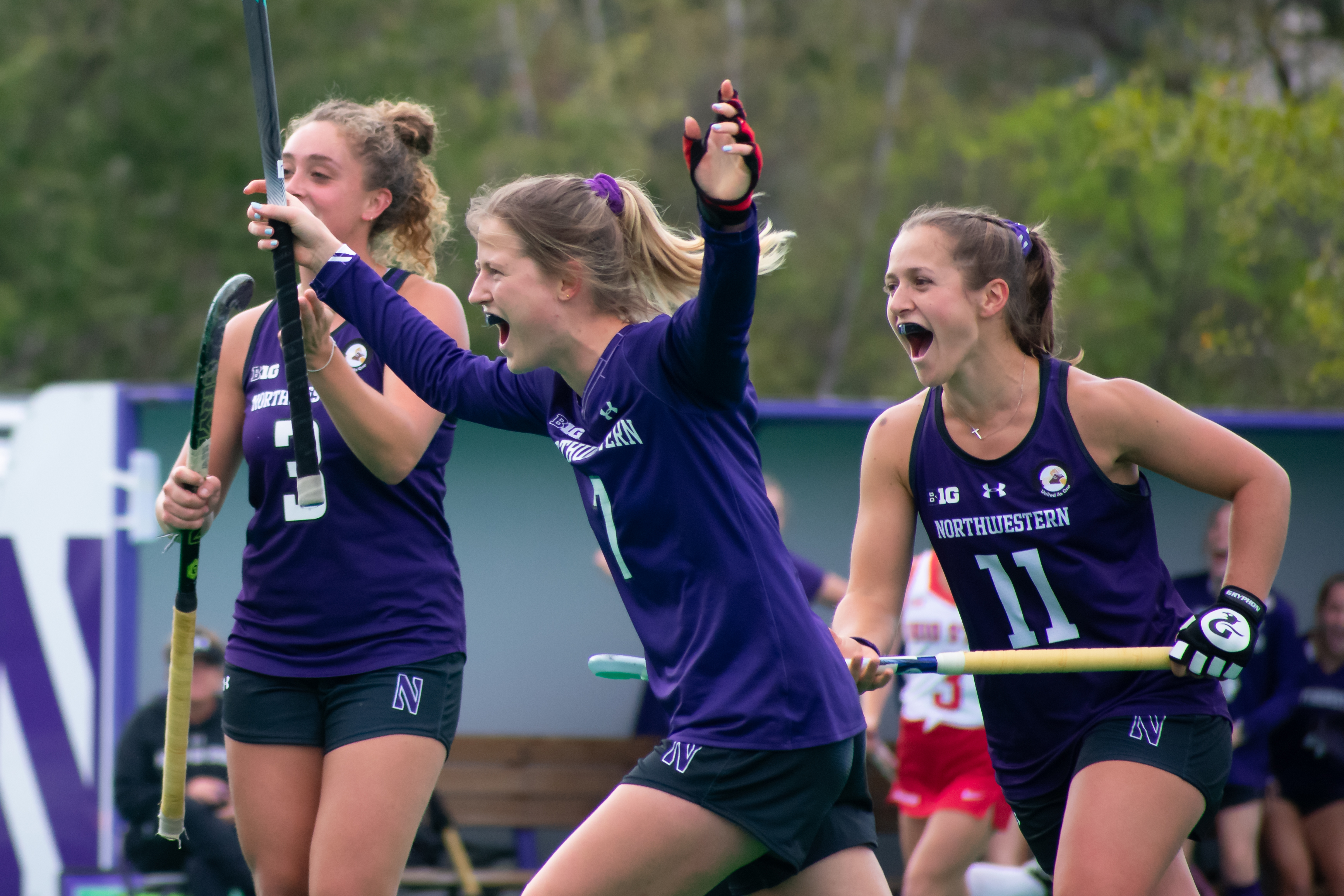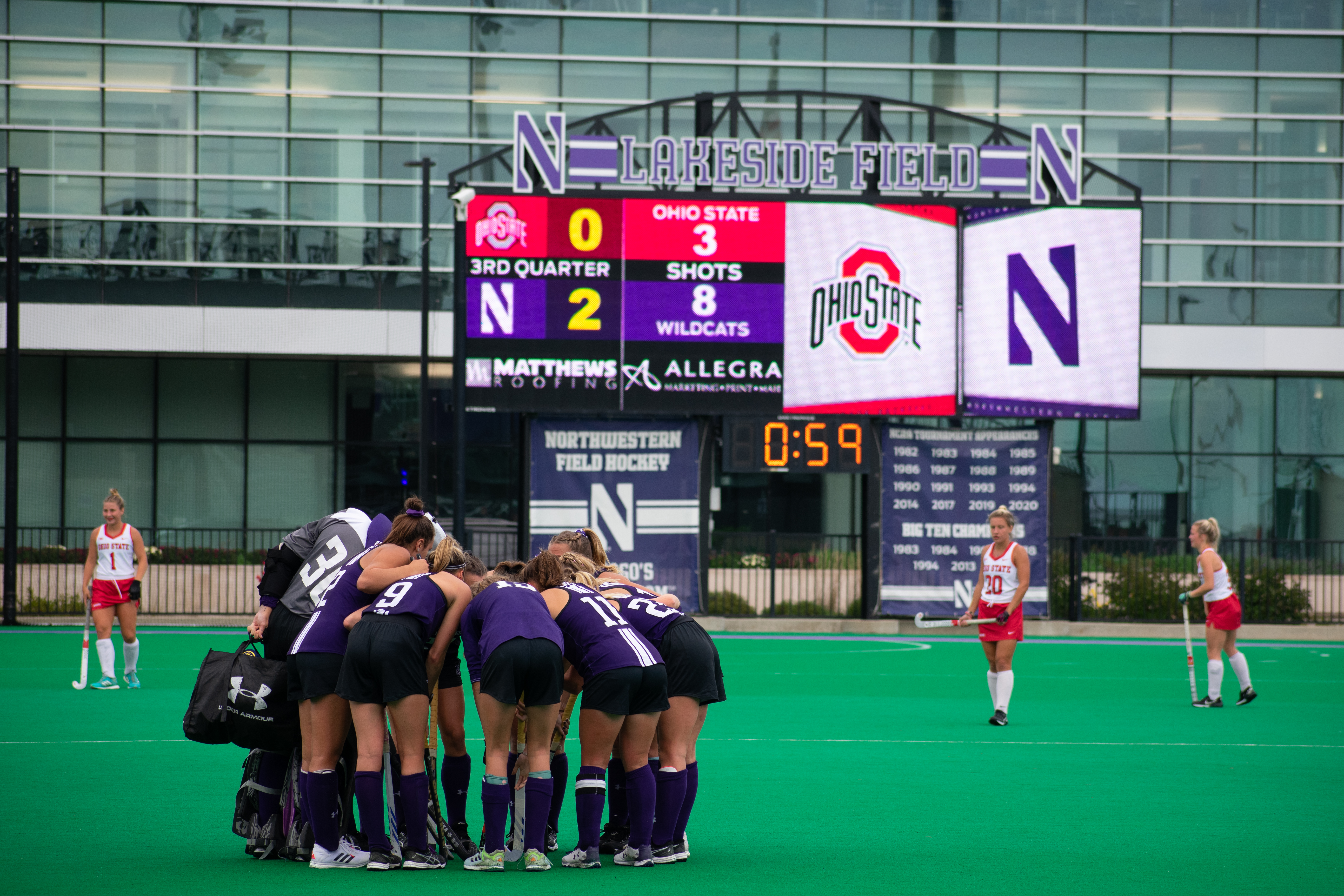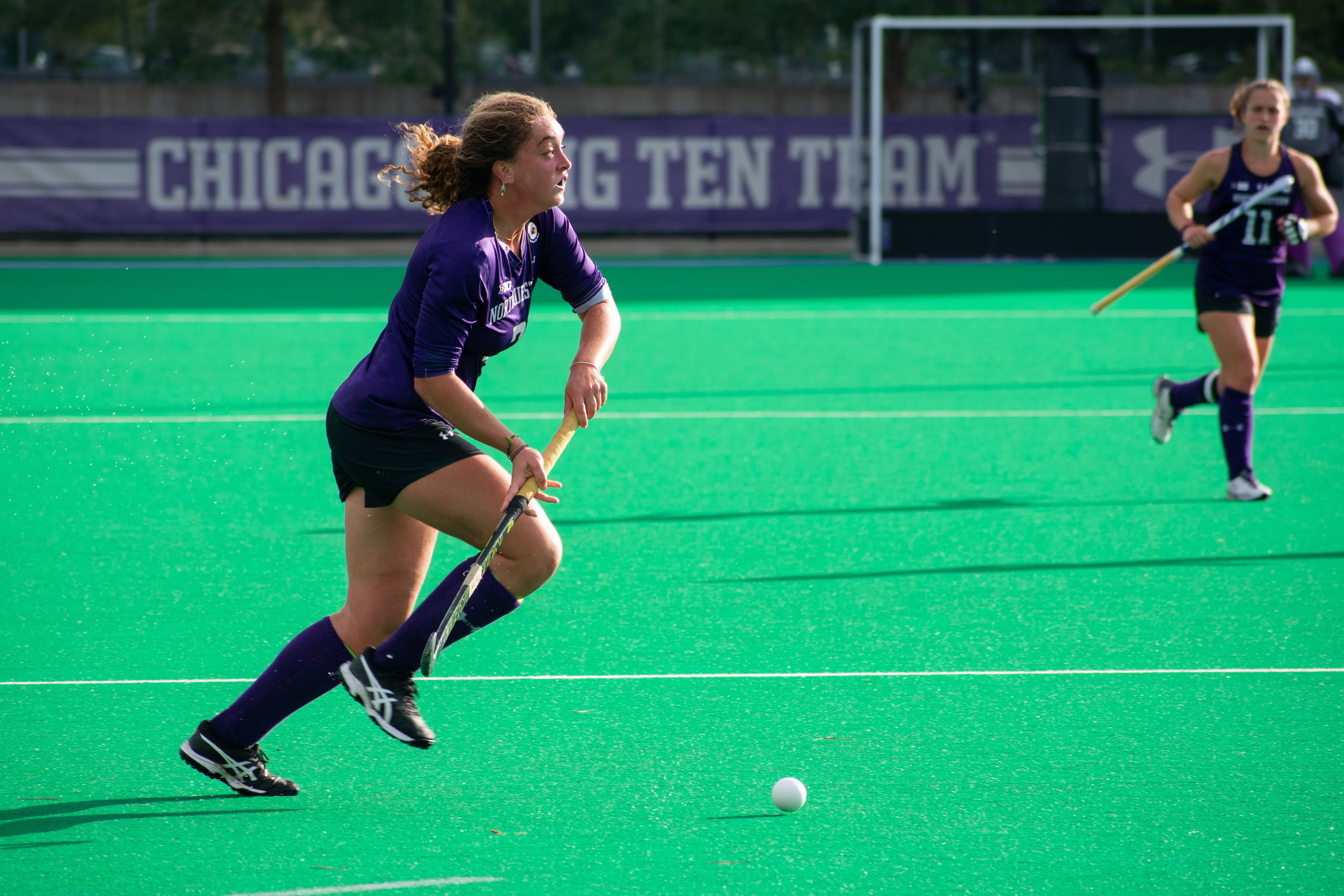
As almost all Northwestern students know, being the best at something isn’t the easiest thing in the world to accomplish. Among all of the challenges of rising to the top, one of the most difficult things included in the task is beating out other worthy competitors to earn the top spot; in other words, to be the best, you have to beat the best.
That is precisely the challenge Northwestern field hockey (14-4, 5-3 B1G) is facing this season. While they’re currently ranked seventh overall in NCAA rankings and have had nine wins against top-25 opponents this fall, they still hold a significant disadvantage as they head into the Big Ten Field Hockey Tournament. Ranked just fifth out of seven total teams, they’re playing to prove themselves in the postseason, especially after coming up just short of the championship – losing to Big Ten rival Iowa in the NCAA tournament – during last spring’s shortened season.
So do the ’Cats stand a chance in the upcoming postseason play? And who should fans be watching when they tune in to the team’s first round game this upcoming Thursday? Coming almost two months too late, this feature will aim to answer most of these questions, and more importantly, serve as a reminder of how good this team can be.
Of course, let’s start with how they got here:
The Best Conference in the Sport

Let’s get this out of the way early: the ’Cats are really, really good. There’s no denying how amazing their offensive prowess is on the attack, and the stats are enough to prove it too – Northwestern currently ranks second in the NCAA in goals per game (3.89), assists per game (3.11) and points per game (10.89). Their players have a fantastic tendency to move the ball around the cage and create dynamic opportunities to score, setting themselves up for fantastic wins when it counts.
But if the team is so good at scoring, why is Northwestern ranked so low in conference play? Simple answer: the Big Ten is insanely good at field hockey. Six of the top seven teams in the NCAA are from the conference, including No. 1 Iowa (16-1, 7-1 B1G), No. 2 Rutgers (15-3, 6-2 B1G), No. 3 Penn State (13-4, 6-2 B1G), No. 5 Maryland (13-5, 4-4 B1G), No. 6 Michigan (13-3, 5-3 B1G), and the ’Cats themselves. When you’re scheduled to play six of the best teams in the nation over a period of three weeks, it’s guaranteed that you’re going to have a few bad days in between.
🚨 The #B1GFH bracket is set! 🚨
— Big Ten Conference (@bigten) October 31, 2021
Action begins on Thursday when @umichfldhockey takes on @NUFHCats in the first game of the tournament!
📰 https://t.co/MOozVAk4uk
🏆 https://t.co/N5CzCjgvvW pic.twitter.com/OprYR7Ii58
For the ’Cats, those bad days were back-to-back double overtime losses to Penn State and Michigan. These losses were noteworthy, as the ’Cats played hard and took the teams to extra time on their home turfs, proving how resilient the team is in hostile environments. Unfortunately for Northwestern, there’s only one stat that matters when it comes to final season rankings: wins and losses. While the ’Cats did lose just four games this season, they were enough to put them in the lowest of the top teams, having them look up at their challenge heading into postseason play.
Of course, almost no one ever talks about the regular season in sports; it’s all about the playoffs. All it would take is one dynamic run from the ’Cats to place them back into serious postseason contention, and considering the team’s resilience and determination under pressure, it’s not easy to count them out in the Big Ten tournament.
That being said, who should ’Cats fans look for when playoff time rolls around?
Baekers’ Dozen

It should come as no surprise to anyone who has heard of Northwestern field hockey – let alone watched any games or read any articles about the team – that the star of the show this season is junior forward Bente Baekers. Baekers has shown no signs of slowing down in her third season with the Wildcats and has started to earn a national reputation for her skills. She currently sits at fourth in the nation in points per game (2.69), as well as fifth in the country in goals per game (1.06), totaling 17 goals and nine assists.
Simply put, Baekers is one of the most dynamic scoring threats in the Big Ten with a unique set of skills that makes her a reliable weapon at any point in the game. With an ability to push the pace of play – especially when she’s able to catch defenders making lazy passes or fail to keep up with her speed – the forward keeps things quick and tight in close, making her a very difficult opponent to defend in the clutch.
GOOOOOAAALLLL 💥
— Northwestern FH (@NUFHCats) October 3, 2021
Bente Baekers with the equalizer, just under 2 min left in regulation!
Q4 | NU 1, Penn St. 1 pic.twitter.com/5djAwohOYk
When she’s not pushing pace in transition, Baekers is perfectly happy to camp at the top of the crease and snipe unwitting Big Ten defenders with her powerful slapshot and backhand, making her a reliable scoring threat from almost anywhere in the attacking zone.
THAT'S A WRAP. 6-2 CATS WIN🥳
— Northwestern FH (@NUFHCats) October 17, 2021
With two strokes and a solo goal in the second quarter it's a hat trick for Bente Baekers. Is anyone surprised?? No💜. pic.twitter.com/X7wl68Mtvu
For her efforts, Baekers was named First Team All-Big Ten. This year, however, Baekers has transitioned into a new role for the ’Cats: playmaker. While she still remains one of the best scoring threats in the country, her unique skill with the stick has opened up more opportunities for her fellow players, including some new dynamic presences on the team: graduate transfer forward Clara Roth – who transferred to Northwestern following three seasons at Princeton – and senior midfielder Maren Seidel, who’s enjoying a renaissance after a down year in 2020.
Roth, for example, is second on the team in 30 total points, with 12 goals and six assists. These stats have earned her fourth in the Big Ten in goals scored. Seidel, who endured a bit of a scoring slump in the 2021 spring season, has returned to her first-year form with nine goals and five assists: good for 10th in the Big Ten in total points and points per game.
The steal. The goal. The energy. Maren Seidel is unmatched. 💪😤💯
— Northwestern FH (@NUFHCats) October 15, 2021
2-0 #GoCats pic.twitter.com/ossjQsWafd
These new scoring threats have lessened the pressure on Baekers to be the main goalscorer. It seems she’s enjoying the new system, as she currently sits tied for third in the Big Ten with nine assists. Also helping Baekers set up plays are senior midfielder Kayla Blas – who also currently holds nine assists, and was named second team All-Big Ten – and sophomore midfielder Lauren Wadas, who seems to have a quick trigger in front of the net, totaling a whopping 27 shots on goal this season.
With plenty of playmakers to make the critical pass and new dynamic weapons up front to flank Baekers, it almost seems like the ’Cats are unstoppable up front. The aforementioned stats prove it too, as the team sits in second in the country in almost every offensive metric: assists per game, goals per game and points per game.
Of course, as the saying goes: offense sells tickets, defense wins championships.
Public Defender

Last year around this point in the season, we wrote that Northwestern won games on the field with their mental practice: close games of tightly contested ball, where the slightest advantage needs to be fully exploited. A defensive game of chess, where every move makes a difference.
That’s not the case this year. The ’Cats currently hold a 1.17 Goals Against Average – meaning that on average, they’re expected to allow an expected 1.17 goals per game – good for fourth in the Big Ten. While yes, this is certainly nothing to sneeze at by other NCAA standards, there’s a huge asterisk over the statistic when you consider Northwestern’s likely opponents in postseason play: Iowa (0.56 GAA), Rutgers (1.00 GAA), and their opening match for the Big Ten tournament, Michigan (1.13 GAA).
Does this mean Northwestern should try to play more defensively? Not necessarily, as their style of play has proved effective against teams of this caliber. All of the Wildcats’ losses this year have come by just a single goal margin, and with a 2.65 scoring margin – meaning on average, they score 2.65 more goals than their opponent – they sit just behind Iowa and Liberty for the largest margin in the country. As a result, success for the ’Cats won’t come from a massive overhaul of the game plan, but just an x-factor that’ll keep the team in the game.
Enter: Annabel Skubisz.
Fresh off last season – in which she started all 12 games as a first-year – the sophomore goalkeeper has finally seemed to hit her stride, being named the Big Ten Defensive Player of the Week for the final week of the regular season. While her services are usually unneeded for the team, she does come in handy in the clutch, including several key performances in the final week: a 6-0 shutout of Indiana, and a 2-1 win over No. 1 Iowa, the first such win in program history.
🧱🧱 Brick Wall 🧱🧱
— Northwestern FH (@NUFHCats) October 29, 2021
Annabel Skubisz keeps us in front! 👏 pic.twitter.com/lrFPRqeda9
When they take to the pitch on Thursday against Michigan, the team will have the conference at their backs, and the eyes of the country upon them. With a retooled offense, however, as well as one of the top goaltenders in the conference backing them up, the team has all the resources to push themselves back into serious championship contention.
Becoming the best never looked so fun.
